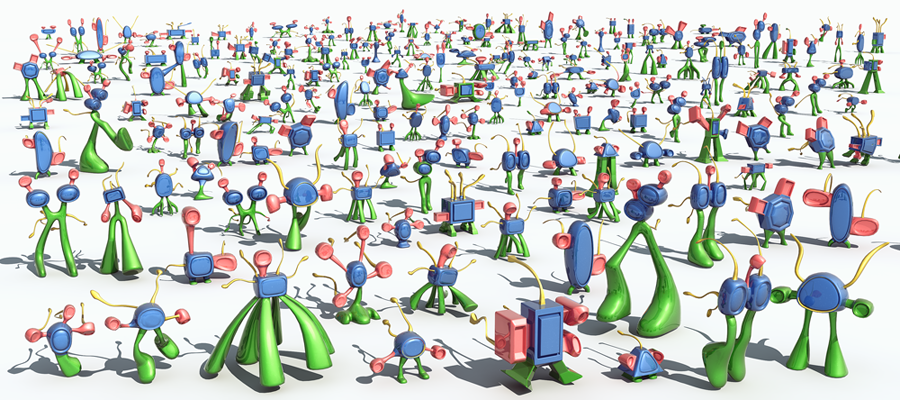The Shape COSEG Dataset
News
December 8, 2012: we fixed several problems in the ground-truth of our modeled irons, tele-aliens, and chairs.
Overview
The goal of this work is to provide data for quantitative analysis of how people consistently segment a set of shapes and for evaluation of our active co-analysis algorithm. To build the dataset, we have collected 11 sets of shapes which possess a consistent ground-truth segmentation and labeling. Among them, seven sets from the dataset of Sidi et al. [2011]. Since we consider the labeling of large sets as one of the main motivations of our work, we created three additional large sets: tele-alines, vases and chairs. These three sets consists of 200, 300, 400 shapes, respetively. We also created a small but challenging set of irons.
Downloads
All data can be downloaded for free via the following links.
8 small sets
| Candelabra | 28 Shapes | Ground-truth | |
| Chairs | 20 Shapes | Ground-truth | |
| Fourleg | 20 Shapes | Ground-truth | |
| Goblets | 12 Shapes | Ground-truth | |
| Guitars | 44 Shapes | Ground-truth | |
| Lamps | 20 Shapes | Ground-truth | |
| Vases | 28 Shapes | Ground-truth | |
| Irons | 18 Shapes | Ground-truth |
3 large sets
| Tele-aliens | 200 Shapes | Ground-truth |  |
| Vases | 300 Shapes | Ground-truth |  |
| Chairs | 400 Shapes | Ground-truth |  |
Sources
The related projects from which the dataset grew to its current form are:
Credits
We thank Xiaobai Chen (Princeton mesh segmenation bechmark), Daniela Giorgi and AIM@SHAPE (SHREC 2007 Watertight Track), and Ran Gal for some of the models used in the benchmark. Andrea Tagliasacchi, Oliver van Kaick, Oana Sidi, Yanir Kleiman, Shmulik Asafi, Yunhai Wang and the artists in SIAT: Jiacheng Ren and Guangfan Pan, have contributed to creating the other shapes.
Links
Projective shape analysis (PSA) dataset
Feedback
Please send email to cloudseawang [at] gmail.com if you have any questions.
